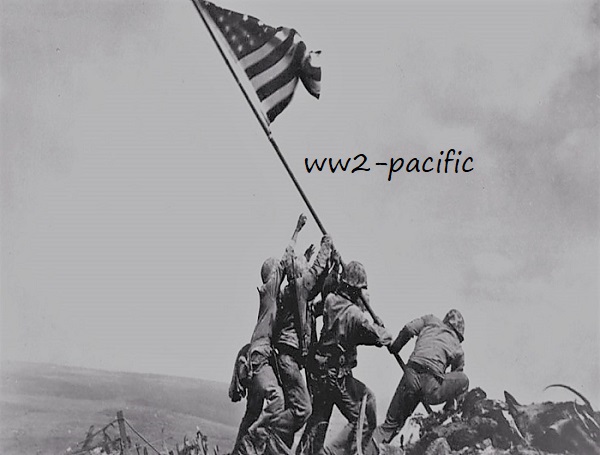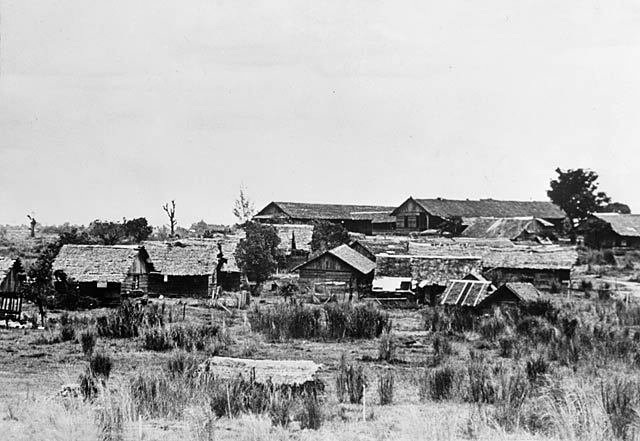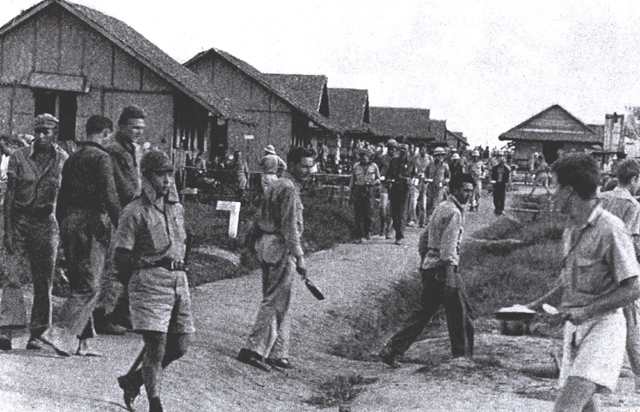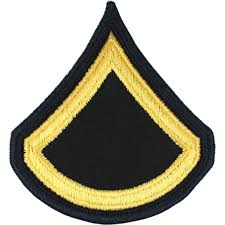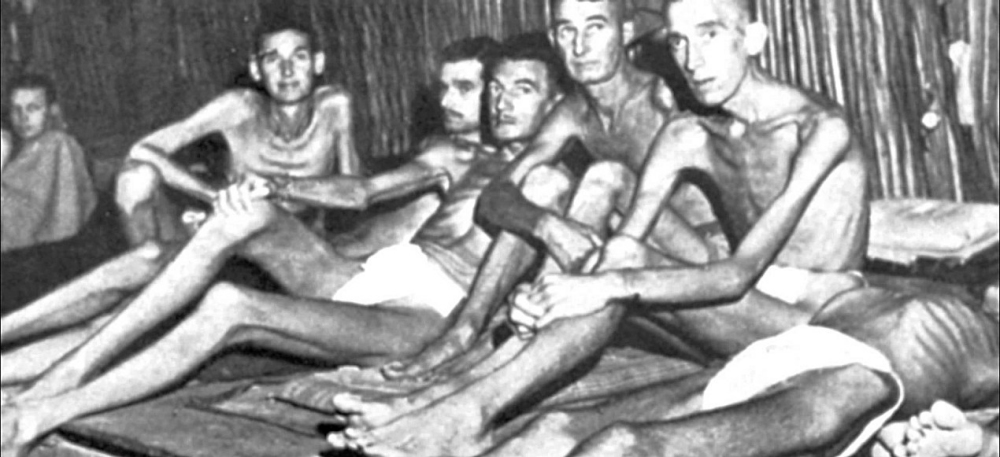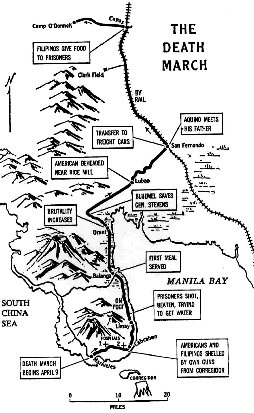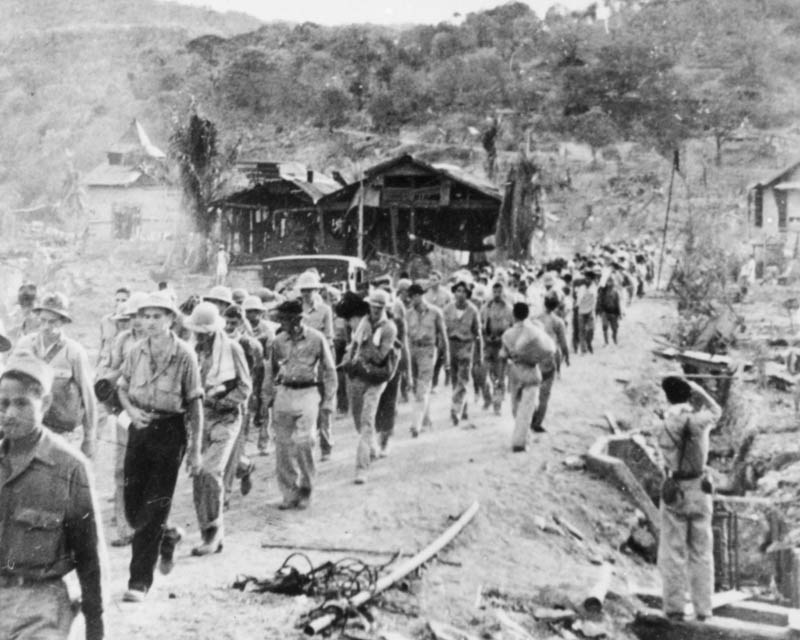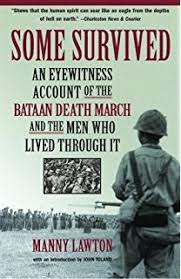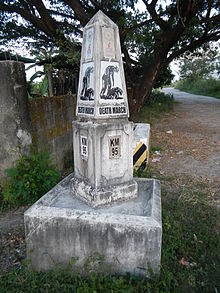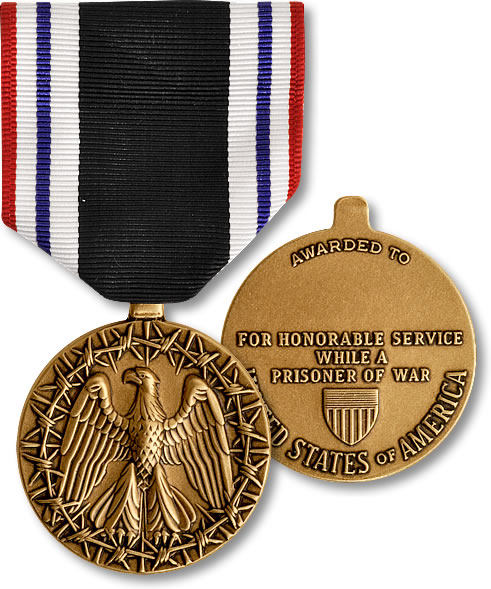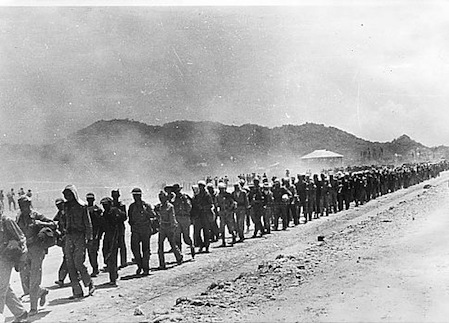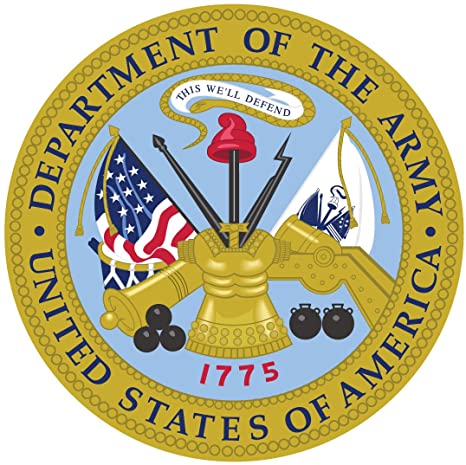Rank and Name, Private First Class Edward N. Edwards.
Unit/Placed in, 31th Infantry Regiment, United States Army.
Walked the Bataan Death March (more info below).
Camp O’Donnell
(Army Training Base, not yet in use)
He survived the Death March and faced now the horrific conditions at Camp O’Donnell. about 1500 American and 22,000 Filipino prisoners of war died at Camp O’Donnell from starvation, disease and the brutal treatment received at the hands of the captors during the few months it was open.
Edward is born approx. on 1922 in Oklahoma.
Edward enlisted the service in Arizona with service number # 18043520.
Edgar died as a POW from sickness in Camp O’Donnell on 25 June 1942, he is honored with a Silver Star Medal, POW Medal, Good Combat Ribbon, Good Conduct Medal, American Campaign Medal, Asiatic Pacific Campaign Medal, WW II Victory Medal.
Edward is buried/mentioned at Manila American Cemetery and Memorial Manila, Metro Manila, National Capital Region, Philippines.
Thanks to, http://www.mansell.com/pow-index.html
Jean Louis Vijgen, ww2-Pacific.com ww2-europe.com
Air Force Info, Rolland Swank.
ABMC Website, https://abmc.gov
Marines Info, https://missingmarines.com/ Geoffrey Roecker
Seabees History Bob Smith https://seabeehf.org/
Navy Info, http://navylog.navymemorial.org
POW Info, http://www.mansell.com Dwight Rider and Wes injerd.
Philippine Info, http://www.philippine-scouts.org/ Robert Capistrano
Navy Seal Memorial, http://www.navysealmemorials.com
Family Info, https://www.familysearch.org
WW2 Info, https://www.pacificwrecks.com/
Medals Info, https://www.honorstates.org
Medals Forum, https://www.usmilitariaforum.com/
Find a Grave, https://www.findagrave.com
Tank Destroyers, http://www.bensavelkoul.nl/
WordPress en/of Wooncommerce oplossingen, https://www.siteklusjes.nl/
Military Recovery, https://www.dpaa.mil/
DEATH MARCH
Following the surrender of Bataan on April 9, 1942, to the Imperial Japanese Army, prisoners were massed in Mariveles and Bagac town.
As the defeated defenders were massed in preparation for the march, they were ordered to turn over their possessions.
Word quickly spread among the prisoners to conceal or destroy any Japanese money or mementos, as the captors assumed it had been stolen from dead Japanese soldiers.
Prisoners started out from Mariveles on April 10, and Bagac on April 11, converging in Pilar, Bataan, and heading north to the San Fernando railhead.[3] At the beginning of capture there were rare instances of kindness by Japanese officers and those Japanese soldiers who spoke English, such as sharing of food and cigarettes and permitting personal possessions to be kept. This was fast followed by unrelenting brutality, theft, and even knocking men’s teeth out for gold fillings, as the common Japanese soldier had also suffered in the Battle for Bataan and had nothing but disgust and hatred for his “captives” (Japan did not recognize these people as POWs).[4] The first atrocity—attributed to Colonel Masanobu Tsuji—occurred when approximately 350 to 400 Filipino officers and NCOs under his supervision were summarily executed in the Pantingan River massacre after they had surrendered. Tsuji—acting against General Homma’s wishes that the prisoners be transferred peacefully—had issued clandestine orders to Japanese officers to summarily execute all American “captives.”Though some Japanese officers ignored the orders, others were receptive to the idea of murdering POWs.[12]
During the march, prisoners received little food or water, and many died.[2][13][14] Prisoners were subjected to severe physical abuse, including being beaten and tortured. On the march, the “sun treatment” was a common form of torture. Prisoners were forced to sit in sweltering direct sunlight, without helmets or other head covering. Anyone who asked for water was shot dead. Some men were told to strip naked or sit within sight of fresh, cool water.[8] Trucks drove over some of those who fell or succumbed to fatigue, and “cleanup crews” put to death those too weak to continue, though some trucks picked up some of those too fatigued to continue. Some marchers were randomly stabbed by bayonets or beaten. The Death March was later judged by an Allied military commission to be a Japanese war crime.
Once the surviving prisoners arrived in Balanga, the overcrowded conditions and poor hygiene caused dysentery and other diseases to spread rapidly. The Japanese did not provide the prisoners with medical care, so U.S. medical personnel tended to the sick and wounded with few or no supplies.[13] Upon arrival at the San Fernando railhead, prisoners were stuffed into sweltering, brutally hot metal box cars for the one-hour trip to Capas, in 43 °C (110 °F) heat. At least 100 prisoners were pushed into each of the trains’ unventilated boxcars. The trains had no sanitation facilities, and disease continued to take a heavy toll on the prisoners.
Upon arrival at the Capas train station, they were forced to walk the final 14 km (9 mi) to Camp O’Donnell. Even after arriving at Camp O’Donnell, the survivors of the march continued to die at rates of up to several hundred per day, which amounted to a death toll of as many as 20,000 Filipino and American deaths. Most of the dead were buried in mass graves that the Japanese had dug behind the barbed wire surrounding the compound. Of the estimated 80,000 POWs at the march, only 54,000 made it to Camp O’Donnell.
The total distance of the march from Mariveles to San Fernando and from Capas to Camp O’Donnell (which ultimately became the U.S. Naval Radio Transmitter Facility in Capas, Tarlac; 1962-1989) is variously reported by differing sources as between 96.6 and 112.0 km (60 and 69.6 mi).
Thanks To Wikipedia
